Ertach Kernow - Camelford its place in history
Last week I was persuaded by one of our young Newquay Museum volunteers I really wanted to visit a certain shop selling vintage goods in Camelford. Thinking I might pick up something for the museum and a chance to look around Camelford off we went to this historic town that most people just pass through.
The name Camelford comes from the obvious ford across the Camel, in Kernewek Reskammel, and has been known as that with various spelling differences since the 13th century. The origins based on the River Allan, or prior to an Ordnance Survey error in 1888, River Layne with the Cornish for bent or crooked Kamm. This together with some Arthurian input into the 13th century poem Brut, written by the English priest Layamon where the name Camelford was first mentioned.
The nearby hamlet of Helstone was once the more important settlement, first mentioned in 1086 in Domesday as Henliston. From its name it can be seen that prior to that it must have been an important manor hen (ancient / long standing) and lys (court/administrative centre) being Cornish elements followed by the Saxon tun. With 53 households in 1086 this placed it within the top twenty percent of all Domesday settlements. The value was given as £15 18/- 2d a sizeable sum for those times benefiting the tenant-in-chief and lord of the manor, who was unsurprisingly the Earl of Cornwall, Robert of Mortain. There was also an notable deer park here belonging to the Earldom and later the Duchy of Cornwall until both Lanteglos Park and the adjoining Helsbury Park were disparked by Henry VIII in 1540.
Many archaeologist and historians consider it was only due to the close vicinity of the earls manor at Helstone that Camelford was created as a settlement by Richard Earl of Cornwall. Perhaps there was seen to be a need for an agricultural market better placed than say the well-established settlements at Tintagel and Boscastle but keeping some distance from Launceston. That it never grew to be a larger town may have been due to it being a planted town and not one established through real need by the local farming community. However, Richard would have benefited through income from the market especially with one of his own estates nearby.
Most villages and towns have a church so it might be surprising that all there is in Camelford is a chapel of ease to the mother church situated some way away from the town. Lanteglos-by-Camelford is the ecclesiastical parish in which Camelford and Helstone are located, with its mother church St Julitta. A small chapel dedicated to St Thomas the Martyr was licenced in Camelford by Bishop Stapledon of Exeter in 1312, but this fell into ruin following the Reformation. The church of St Julitta is close to the manor of Helstone, owned by the Earldom of Cornwall and was probably built at the instigation of one of the early earls of Cornwall. Certainly, there would have been interest from Earl Richard who held the manor and built the castle at Tintagel. As the church has Norman features construction may have been begun by the first Norman earl, Robert of Mortain. The rectors of the church were appointed by the earldom and a list of these since 1275 is hanging in the church. St Julitta is a lovely church and situated in a beautiful valley and will feature in a later article, deserving more space than can be included here. The current chapel of ease dedicated to St Thomas of Canterbury, in the centre of Camelford, was completed in 1938. It was described by Nikolaus Pevsner in his guide as “A minor delight. It sits well on a slightly elevated site above the main road, its modest scale and use of local Delabole slate combining well with an understated Romanesque style”.
St Juliots Well Holiday Park has a holy well that was nearly lost to history, known as St Julitta’s. It was visited in 1891 by the Quiller-Couch sisters, who wrote in their book on holy wells “We were therefore much surprised to see a well-preserved little structure looking as if it had stood there unmolested for scores of years”. Sir John Maclean in his ‘History of Trigg Minor’ comments in the last 20 years (circa 1850) the building had ‘ruthlessly been torn down and the place desecrated’, probably during the ownership of Messrs Pym and Whiteford. The following owner Colonel Samuel Bake had taken the stones lying there and reconstructed the well. This holy well can be accessed via the holiday park and is less than half a mile from the church.
The bridge at Camelford appears to have replaced the ford crossing by the 12th century. Whether replacing or repairing it there was an indulgence of 40 days given by Bishop Veysey of Exeter in 1521 for those assisting in works relating to Camelforde Brydge. The current bridge was completed in the early 19th century. Unfortunately, Camelford seems to have had a dip in its fortunes during the 16th and early 17th centuries with writers commenting disparagingly about the town. The from the late 17th century Camelford would see many improvements and new buildings constructed.
Camelford’s rise to a more important status began with the town becoming a free borough through a charter issued by Richard Earl of Cornwall in 1259. This benefited Camelford by allowing the burgesses to hold a market on Fridays and a three-day fair starting on St Swithin’s Eve. This charter with benefits were confirmed by later monarchs, but without the addition of any additional privileges. In 1552 Camelford was endowed with an elective franchise by Edward VI with the rights of householders and those paying scot and lot (local taxes) to elect two members of parliament. As with many of the Cornish parliamentary seats, which peaked at 44 members of parliament before 1821, there were innumerable cases of bribery and corruption with huge sums of money changing hands.
However, the state of politics and the growing population of new towns throughout England which had no parliamentary representation, as opposed to many older rotten boroughs with few residents or voters, led to the passing of the Great Reform Act of 1832. This led to the sweeping away of numerous parliamentary seats, especially in Cornwall including those of Camelford.
Perhaps one MP, Sir James Smith, who was a member for Camelford between 1678 and his death in 1681 should be remembered more positively. In 1679 he founded a grammar school on the outskirts and overlooking the town. A new school was constructed along what would be College Road in 1879, which in turn was replaced in 1962 by the first purpose-built comprehensive school in Cornwall on Dark Lane. The school is still known after Sir James as the Sir James Smith Community School. There is a blue plaque in memory of Sir James Smith on Warmington House, 32 Market Place in the centre of Camelford. This property is Grade II listed, possibly built by Sir James in the 17th century and later remodelled retaining many of its earlier features.
During the 19th century certain tourism became focused on Camelford as visitors took increasing interests in visiting Bodmin Moor and Arthurian sites. Poets such as Alfred Lord Tennyson, Poet Laureate from 1850 to 1892, had made Arthurian themes popular. Tennyson’s own Idylls of the King published between 1859 and 1885 in twelve cycles was a retelling of the legends allegorised for the Victorian age and included his well-known work Morte d’Arthur. Also writing his own Arthurian work was Tennyson’s friend the Reverend Roberts Stephen Hawker of Trelawny fame, with his The Quest of the Sangreal published in 1863.
Nineteenth century tourist guides such as Black’s Guide to Cornwall (1885), Murray’s Handbook (1859), Baddeley & Wards Thorough Guide (1885) and Wallcotts Guide to the Coasts of Devon & Cornwall (1859) all mention Camelford. They pick out the Darlington Inn and Queens Arms as inns to stay, albeit Camelford has, according to the Thorough Guide, ‘no claims of its own to tourist’s attention’. Arthurian related sites are on the guidebooks itinerary of visits, as are Cornwall’s highest peaks of Bronn Wenneli and Tor Garow. Happily, Murray’s Handbook points out the corruption of the Cornish Bronn Wenneli, meaning Hill of Swallows, to the anglicised Brown Willy which is frankly abhorrent having no meaning whatsoever.
The parish of Lanteglos-by-Camelford has some interesting historic buildings and monuments including nearly one hundred Grade I and II which are listed. St Julitta’s Church is a Grade I with a number of Grade II chest tombs within the picturesque churchyard. Camelford itself has a large number of listed buildings and is well worth a stop off to wander around. Hopefully these will be maintained and valued well into the future.
Our trip to the vintage goods shop was a success, I came away with some very useful purchases for our Newquay museum. Josh and I enjoyed our trip to Camelford and look forward to visiting again as there’s much more to see. I must commend all those responsible for ample cheap parking, good clean toilet facilities, well maintained flowerbeds and a litter free environment. Also, lovely to see a community supporting Ukraine with a tree of blue and yellow ribbons. Splann!
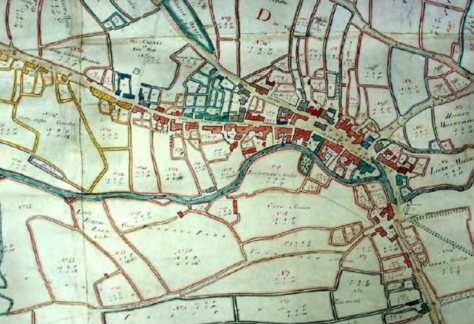

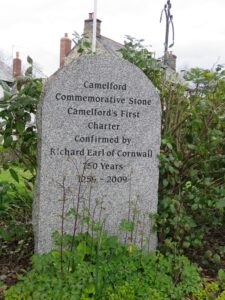
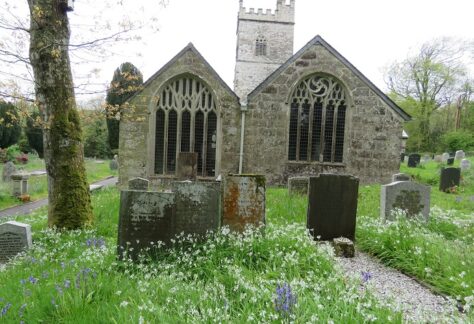
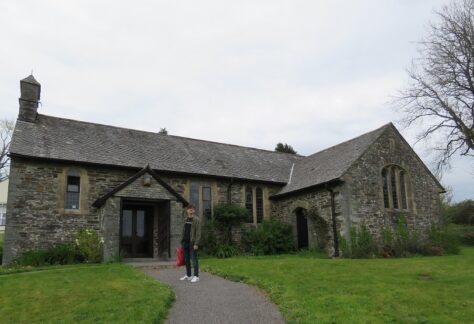
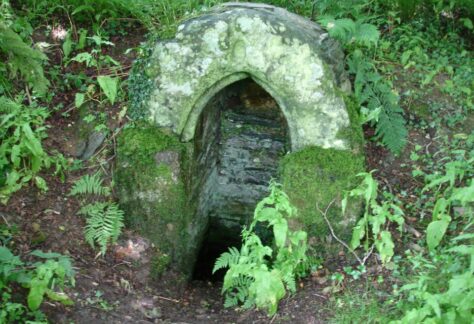
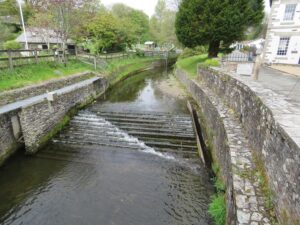
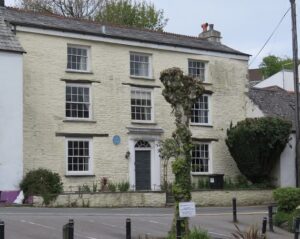
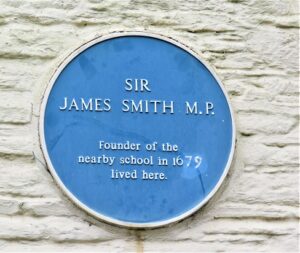
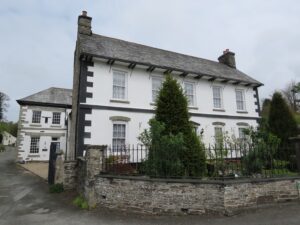
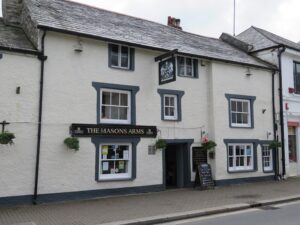
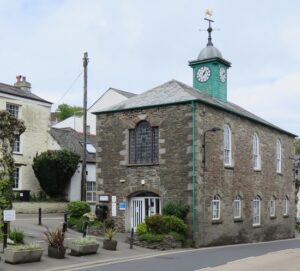
![[98] Voice - Ertach Kernow- 11.05.22A Camelford [S] Camelford its place in History](https://www.cornwallheritage.com/wp-content/uploads/2022/05/98-Voice-Ertach-Kernow-11.05.22A-Camelford-S-237x300.jpg)
![[98] Voice - Ertach Kernow- 11.05.22B Camelford [S] Camelford its place in History](https://www.cornwallheritage.com/wp-content/uploads/2022/05/98-Voice-Ertach-Kernow-11.05.22B-Camelford-S-239x300.jpg)
![[98] Ertach Kernow Heritage Column - 11th May 2022 - Gorsedh Kernow Proclamation at Hayle Ertach Kernow Heritage Column - 11th May 2022 - Gorsedh Kernow Proclamation at Hayle](https://www.cornwallheritage.com/wp-content/uploads/2022/05/98-Ertach-Kernow-Heritage-Column-11th-May-2022-Gorsedh-Kernow-Proclamation-at-Hayle-300x293.png)